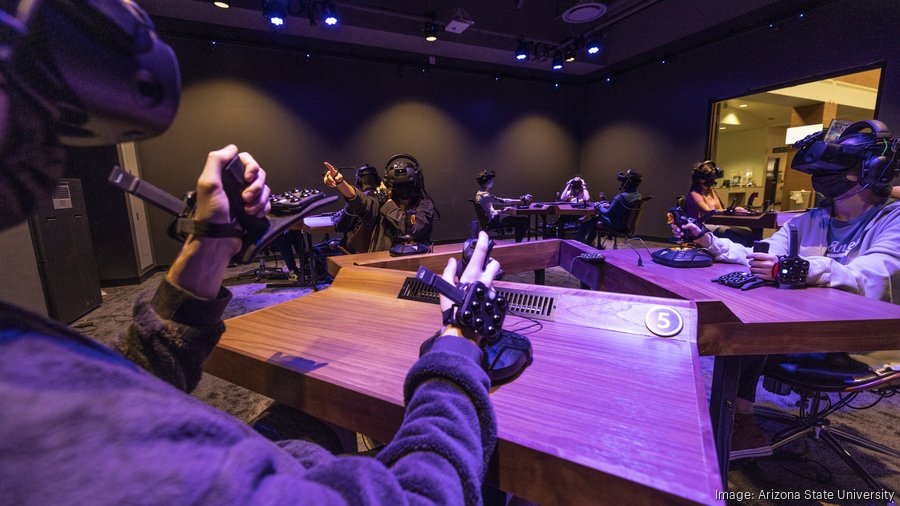Listen to this article 3 min
Rowan University will be just the second school ever to use a new virtual reality technology created by the former founding head of DreamWorks Studios and will spend about $3.2 million to build out new virtual reality spaces on its campus.
The virtual reality technology the school will soon use was developed by Dreamscape Learn, which was founded by film producer and former DreamWorks head Walter Parks, along with Arizona State University President Michael Crow. Arizona State launched a pilot program with Dreamscape Learn in 2022, and now Rowan will be the only other school with access to the technology.
Starting in January, Rowan plans to launch a six-person research pod for faculty to test out programs and begin developing virtual reality-based curriculum. As part of the school's ongoing renovation to its Campbell Library, Rowan will also build out a new immersive learning center with two different pods for classes and students to use for the start of the 2024-25 school year. The pods will have space for 30 students and two teachers and be outfitted with virtual reality headsets, sensors and technology like fans, mist and shaking mechanisms to emulate real-world sensations.
The adoption of the technology is an extension of a project articulated by President Ali Houshmand in 2021 that he called "The University of the Future". The project roadmaps a path for Rowan to be a leading innovator in higher education, and Dreamscape Learn positions the university to be ahead of the curve when it comes to virtual reality in education.
"We want to be leaders in undergraduate education," Provost Tony Lowman told the Business Journal. "The only way you're going to do that is if you're teaching with the most advanced tools available. We didn't just go and look for the tools that put us in front today, we're already five years ahead. And I think that makes this a very attractive place for undergraduate students to come and study."
Starting next fall, Dreamscape Learn technology will be used in biology classes — which is how it was piloted at Arizona State — but Lowman foresees it expanding to other disciplines. That might include potential partnerships or overlap with students and faculty in paleontology, as well as areas like sustainability or disaster readiness, for example.
Though the technology is still in its infancy, Rowan sees an opportunity to tap into what it expects will be a growing network of schools using Dreamscape Learn. Lowman said that as faculty develop curriculum, there will be opportunities to license classes and have faculty from other universities pay for the original courseware Rowan professors develop. He hopes that the revenue associated with that licensing could eventually cover the costs of the fit out and licensing as the Dreamscape Learn network grows. The cost for Rowan to license virtual reality programming will be about $500,000 per year, Lowman estimated.
"As we develop classes as part of the network then we will start licensing classes back into the network so that we may monetize some of our platforms through the Dreamscape network," Lowman said.
Though the South Jersey university is among the first that will utilize Dreamscape Learn, Lowman said that he expects the network to see widespread adoption in the coming years. Already, 12,000 Arizona State students have gone through biology courses that incorporate the Dreamscape Learn technology. Crow said that the platform is a chance to "rethink the way we educate students."
"Rowan University is perfectly positioned to take this leap with us," the Arizona State University president said in a statement. "They have visionary leadership in Dr. Houshmand and forward-thinking faculty who will, no doubt, take this even to the next level."
Houshmand said that he sees similarities between Rowan and Arizona State, the latter which has been ranked the most innovative school in the nation by U.S. News and World Report for nine straight years. It's a title Rowan is striving for and the school feels the new virtual reality technology is a step toward that.
"This is the future. We're ready to adopt the future today. We don't want to wait until 200 other universities are doing it," Lowman said. "We think the time is now and we're going to have a lot of fun with it and really shape what higher [education] should look like."





